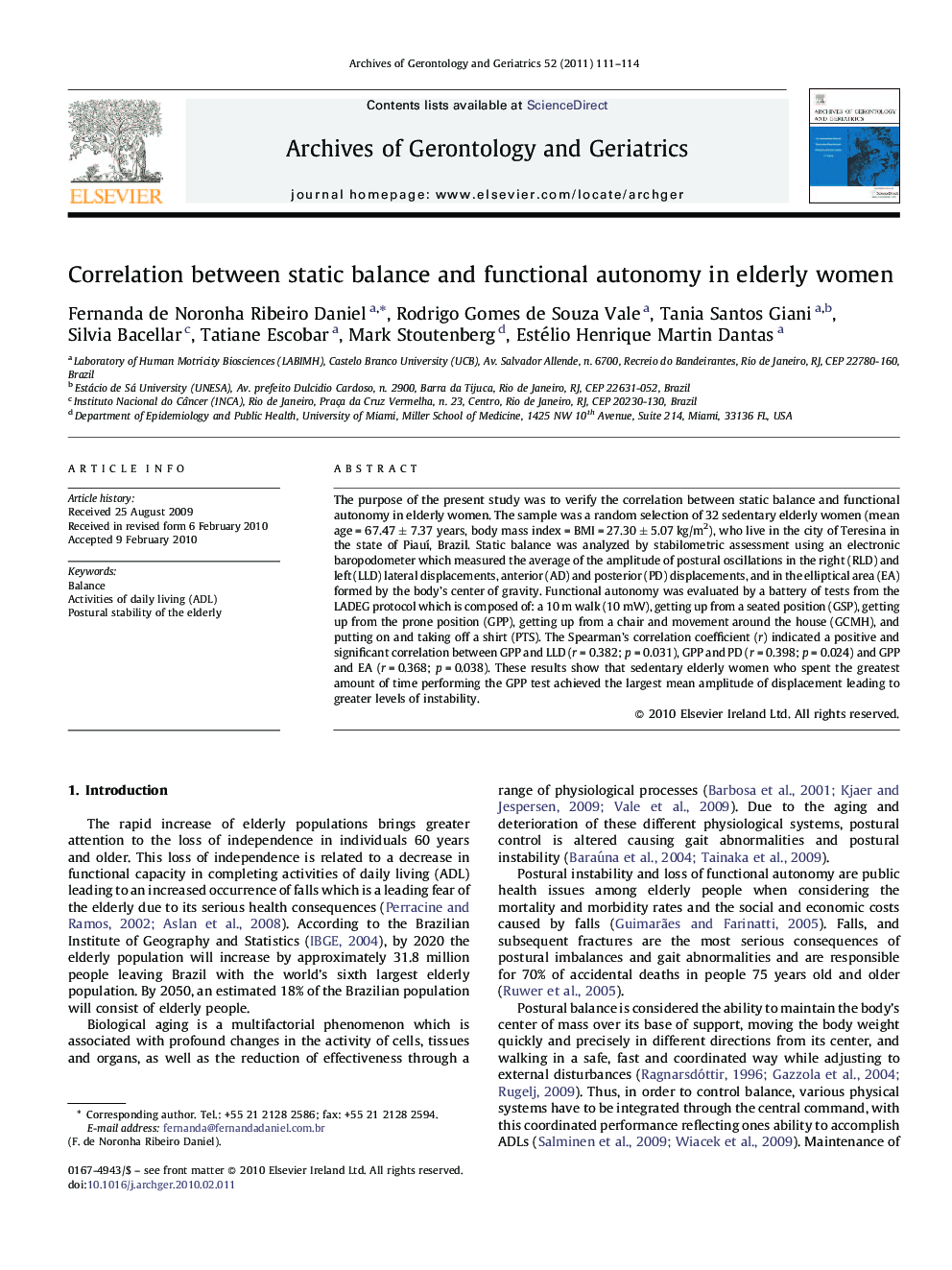| Article ID | Journal | Published Year | Pages | File Type |
|---|---|---|---|---|
| 1903605 | Archives of Gerontology and Geriatrics | 2011 | 4 Pages |
The purpose of the present study was to verify the correlation between static balance and functional autonomy in elderly women. The sample was a random selection of 32 sedentary elderly women (mean age = 67.47 ± 7.37 years, body mass index = BMI = 27.30 ± 5.07 kg/m2), who live in the city of Teresina in the state of Piauí, Brazil. Static balance was analyzed by stabilometric assessment using an electronic baropodometer which measured the average of the amplitude of postural oscillations in the right (RLD) and left (LLD) lateral displacements, anterior (AD) and posterior (PD) displacements, and in the elliptical area (EA) formed by the body's center of gravity. Functional autonomy was evaluated by a battery of tests from the LADEG protocol which is composed of: a 10 m walk (10 mW), getting up from a seated position (GSP), getting up from the prone position (GPP), getting up from a chair and movement around the house (GCMH), and putting on and taking off a shirt (PTS). The Spearman's correlation coefficient (r) indicated a positive and significant correlation between GPP and LLD (r = 0.382; p = 0.031), GPP and PD (r = 0.398; p = 0.024) and GPP and EA (r = 0.368; p = 0.038). These results show that sedentary elderly women who spent the greatest amount of time performing the GPP test achieved the largest mean amplitude of displacement leading to greater levels of instability.
